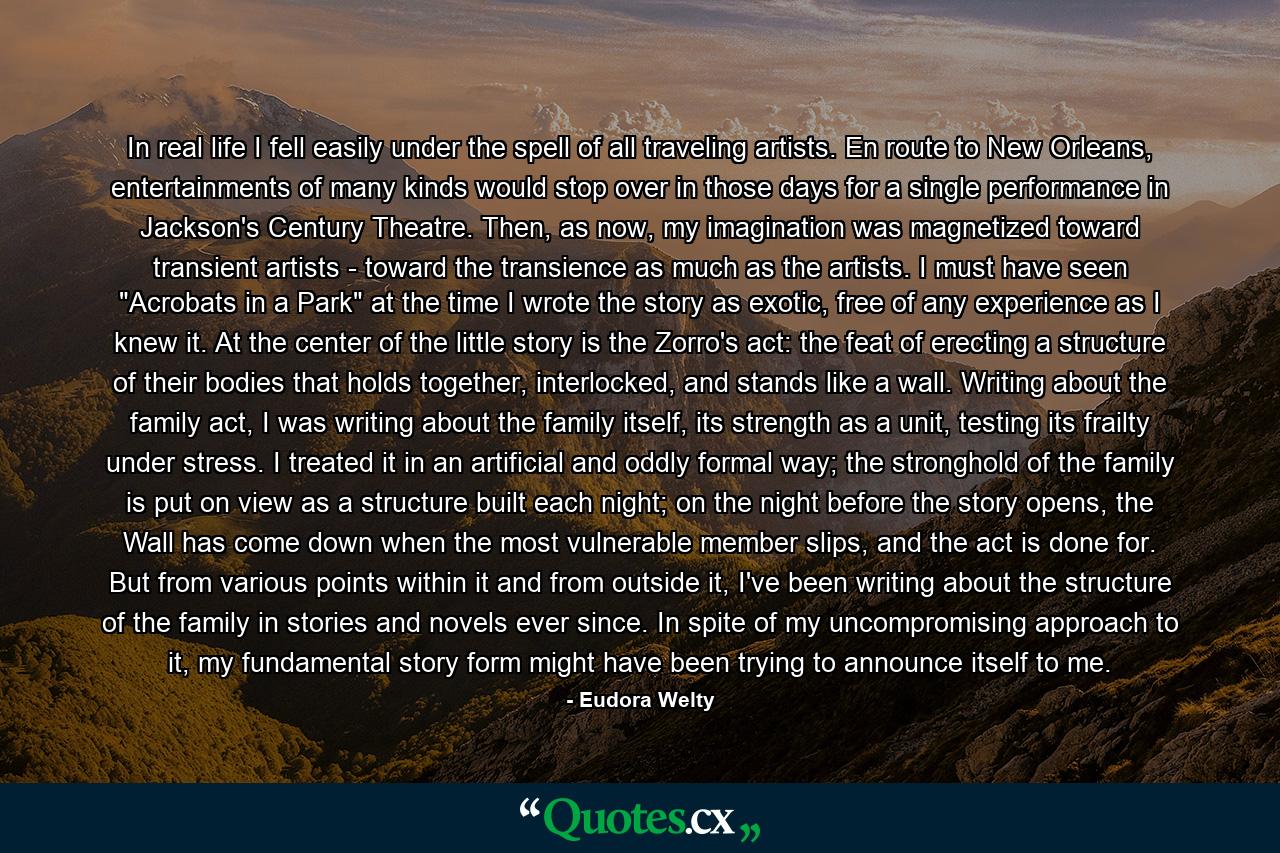In real life I fell easily under the spell of all traveling artists. En route to New Orleans, entertainments of many kinds would stop over in those days for a single performance in Jackson’s Century Theatre. Then, as now, my imagination was magnetized toward transient artists – toward the transience as much as the artists. I must have seen “Acrobats in a Park” at the time I wrote the story as exotic, free of any experience as I knew it. At the center of the little story is the Zorro’s act: the feat of erecting a structure of their bodies that holds together, interlocked, and stands like a wall. Writing about the family act, I was writing about the family itself, its strength as a unit, testing its frailty under stress. I treated it in an artificial and oddly formal way; the stronghold of the family is put on view as a structure built each night; on the night before the story opens, the Wall has come down when the most vulnerable member slips, and the act is done for. But from various points within it and from outside it, I’ve been writing about the structure of the family in stories and novels ever since. In spite of my uncompromising approach to it, my fundamental story form might have been trying to announce itself to me.
